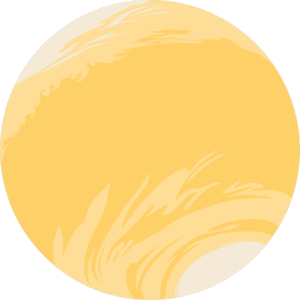The Downlink • Nov 29, 2024
Twister, but make it magnetic
Space Snapshot

Jupiter is a world of storms, including magnetic tornadoes. This ultraviolet image of the gas giant from the Hubble Space Telescope shows a dark region around the south pole, within which is an oval of more concentrated haze. New research suggests that this feature might be caused by swirling vortex dynamics in Jupiter’s magnetic field. Image credit: Troy Tsubota/Michael Wong/UC Berkeley/NASA.
Fact Worth Sharing

Jupiter’s Great Red Spot is the largest storm in the Solar System. At over 16,000 kilometers (10,000 miles) across, it’s even wider than Earth.
Mission Briefings


This is the first close-up picture of a star outside our galaxy. Astronomers at the European Southern Observatory’s Very Large Telescope Interferometer recently captured this image of the star WOH G64, located in the Large Magellanic Cloud over 160,000 light-years away. The star is in the process of dying, ejecting dust and gas before becoming a supernova. Image credit: ESO/K. Ohnaka et al.

Earth’s temporary “minimoon” has left our orbit. The asteroid 2024 PT5 was pulled into orbit by Earth’s gravity in September, sticking around as a temporary satellite for only two months before succumbing to the Sun’s stronger gravitational pull this week.

Dragonfly will launch to Titan on a Falcon Heavy rocket. NASA announced this week that it has awarded SpaceX the launch contract for the Dragonfly mission to Saturn’s moon Titan. Dragonfly is on track to launch in July 2028.

Life found a way to get into a Ryugu sample. Despite stringent measures to avoid contamination, the piece of the asteroid Ryugu returned to Earth by JAXA’s Hayabusa-2 mission is now home to terrestrial microorganisms. Although this isn’t what researchers wanted to happen, it does provide interesting evidence of the adaptability of microbial Earthlings, using extraterrestrial organic material as a source of metabolic energy.
From The Planetary Society


The United Arab Emirates Space Agency is aiming for the asteroid belt. The agency’s next planetary mission will visit seven asteroids and rendezvous with Justitia, the reddest object in the main asteroid belt. This week’s Planetary Radio features an interview with Mohsen Al Awadhi and Hoor Al Hazmi, the director and science team lead for the Emirates Mission to the Asteroid Belt. Pictured: An artist's impression of the mission at an asteroid. Image credit: UAE Space Agency.

Europa Clipper is an advocacy success story worth studying. In a recent article for Aerospace America, Planetary Society Chief of Space Policy Casey Dreier explains the mission’s history and how effective advocacy kept it alive.

Last chance! Cast your vote today for the Best of 2024. If you haven’t already done so, be sure to vote for your favorites in our Best of 2024 campaign. Pick the year’s top missions, space images, cosmic factoids, and more. Voting closes on Nov. 30, and we’ll share the results in early December.
What's Up

Venus is the star (figuratively) of the evening sky, shining super-bright in the west. The crescent Moon will join it on Dec. 4. Yellowish Saturn shines higher up, and Jupiter rises in the evening east. Reddish Mars rises a little later. Find out more in our guide to this month’s night skies.
Carl Sagan. Bill Nye. You.

The Planetary Society was co-founded by Carl Sagan to give you an essential role in space exploration. Not already a member? Join today! When you become a member, you join a global community of space advocates who make a critical difference in supporting a future full of space exploration. Join CEO Bill Nye and become part of the world's most effective independent space advocacy nonprofit!
Wow of the Week

NEOWISE deorbited earlier this month, ending its ten-year dual mission. Starting as the WISE astrophysics mission and then repurposed as the NEOWISE asteroid hunter, the space telescope spent its lifetime observing the Cosmos around us. The mission team recently released over 26 million images collected by the spacecraft. The team highlighted six images among these, including this beautiful picture of the California Nebula. See the other images here. Image credit: NASA/JPL-Caltech/IPAC.
Send us your artwork!
We love to feature space artwork in the Downlink. If you create any kind of space-related art, we invite you to send it to us by replying to any Downlink email or writing to [email protected]. Please let us know in your email if you’re a Planetary Society member!


 Explore Worlds
Explore Worlds Find Life
Find Life Defend Earth
Defend Earth

